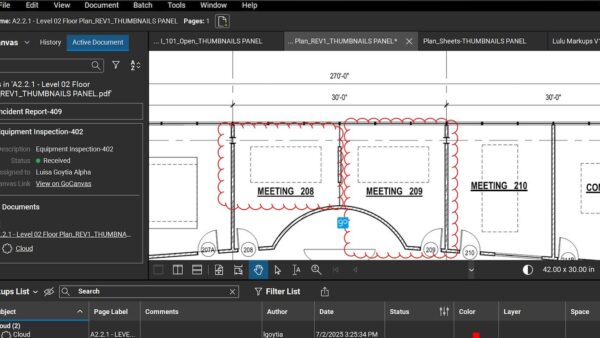David Walters, project manager at Argent responsible for developing and implementing its BIM strategy at its King’s Cross development, on derisking projects using BIM, scaling back Employer’s Information Requirements, and engaging the supply chain.
How important is BIM to your business?
Argent recently went back to the basics and asked: why are we interested in committing resources to using BIM on our projects? It comes down to two key factors: derisking design and delivery; and providing a better service to our building occupiers and investors in terms of long-term asset management.
In what areas do you feel that you are strong and already seeing benefits of BIM?
In design coordination and derisking projects. We operate a two-stage Design and Build model and try to carry BIM coordination through RIBA stages 2 and 3 to really derisk projects, clarify any areas of concern, and tighten up the whole design. Then, when we engage with our contractors, we can confidently identify any remaining risks and issues.
This is helping drive more efficient buildings, in terms of floor areas, cores, and riser space, which translates into more lettable space for us.
Is BIM measurably reducing out-turn costs?
That is very hard to gauge and we are currently trying to work out how to isolate the benefits of one project, which uses an advanced BIM team, versus another that doesn’t, whilst filtering out other factors. Generally, BIM had been about increasing surety and reducing risks rather than costs coming down.
In which areas are you weak or struggling with BIM?
Integration with asset management and understanding what information is actually valuable in a post-handover world. My team has been working to define what data is useful in an Asset Information Model and then translating that into a concise set of Employer’s Information Requirements.
A great deal of information developed during design, construction and delivery is not really required in a structured database post-handover, and full COBie data drops were not the route we want to go down.
We worked with our existing asset managers and facilities managers, and our in-house team dealing with lease-holders and tenants, to understand what information they actually need. The result was quite a short list: mostly just spatial data needed to understand our floor areas and demises, to ensure we are charging people the correct rent; and data for the maintainable assets in our buildings needed for warranties for kit like primary plant, chillers, boilers etc.
Are lots of other clients struggling with this aspect?
Yes, it’s something discussed regularly. At the moment it’s easier to say “give me a full COBie spreadsheet with every field filled in and I’ll work out would what I need from that”. That’s not the way to go – for us a well-ordered O&M online system is sufficient at the moment. And it doesn’t really spur the behaviour you want when linking into things like Soft Landings, or getting FM providers on board earlier and more engaged with the process.
Do you find consultants are charging a premium for delivering projects in BIM?
Yes and no. Where practices are genuinely seeing the benefits of BIM and incorporating it into design and delivery processes on every project, it is an expected service and they are happy to discuss customisation to fit the project or expand an EIR. Where firms are not as far along the journey, not recognising any benefits and still investing in training, software and hardware, there is a tendency to try to reflect that in their fees.
The nature of BIM is to drive a much higher level of detail earlier on and there is a conversation to be had around whether adjusting to that approach from traditional practices requires more upfront support.
What will be the impact of the Level 2 BIM mandate on your buildings and projects?
We won’t be mandating exactly the same things, for example our EIRs will be adapted to meet our requirements, and we will focus more on having a pool of consultants and contractors that are well trained in using BIM, rather than requiring them to roll out exactly the same form of documents and standards as the government is mandating.
However, we will be using the CIC BIM Protocol, which is really good at defining the legal aspects of how to incorporate BIM requirements into appointments and contracts. In wider industry terms, the mandate has been fantastic in terms of promoting uptake and driving momentum.
How do you think public sector clients are responding to the mandate?
It seems to me that some public sector clients still struggle to understand where the benefits are and how to make the publically available documents and templates applicable and useful for a project. Given the massive public portfolio of projects, and the variety of maturities of clients, it is going to be a big challenge going forward.
Is the supply chain going to hold back progress in meeting the mandate?
It’s a big challenge getting data from the Tier 2, Tier 3 and Tier 4 supply chain companies into a structured database rather than a document – one specific example is getting maintenance requirements for a pump or a boiler. All our consultants and main contractors are committing serious investment into BIM, but it’s a real challenge getting supply chain partners to engage in the process and recognise the benefits.
How long before BIM becomes the default on every project?
The industry is going through an investment and learning phase. The problem today is we have different parties from different parts of the industry at different places on the maturity curve. Eventually the term BIM will fall away and become part of business as usual. We will all move away from a very document-driven, email-driven world to focus on structured data and clear processes.














